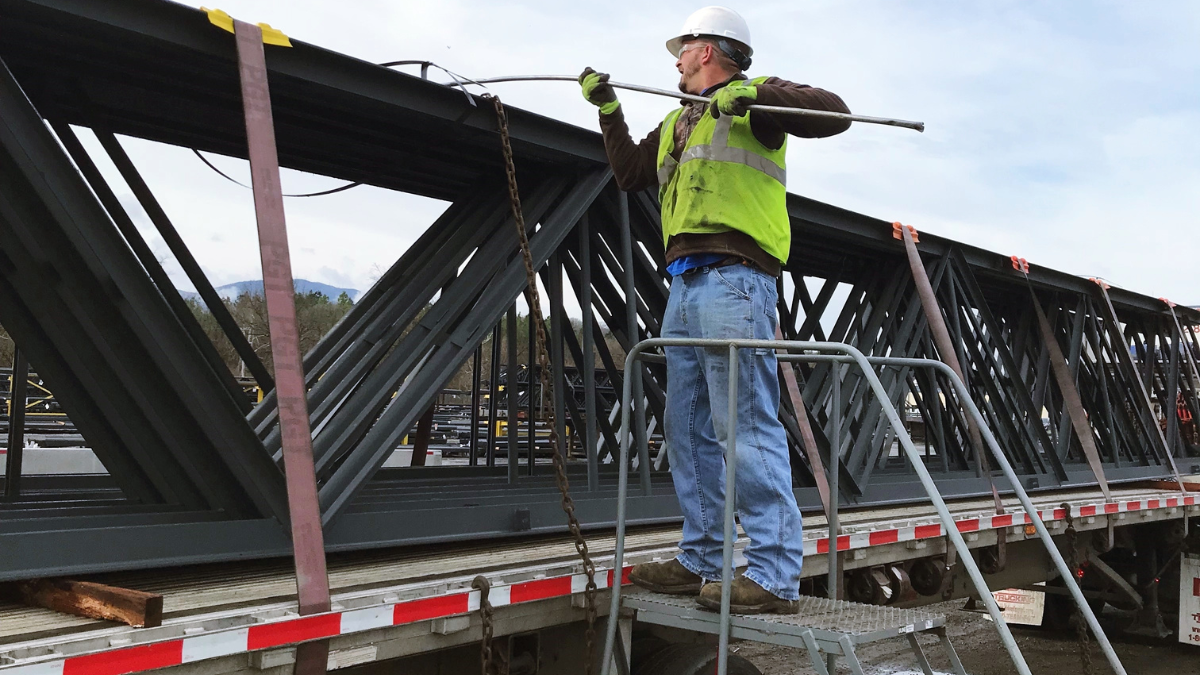Protecting our most valuable asset: America’s truck drivers
Carriers and shippers share a vested interest in driver safety

When it comes to truck driver safety, one might assume that the majority of injuries are the result of vehicle crashes, but this is not the case. The Bureau of Labor Statistics reported that from 2016-2020, slips, trips and falls were the leading source of injuries to truck drivers. And according to the National Safety Council, work-related injuries and illnesses involving days away from work due to slips, trips and falls are on the rise. From 2018-2020, the average number of reported cases per year in the transportation industry was 102,310, compared to 94,126 cases from 2015-2017.
Why is there an uptick in incidents when these safety events are both preventable and avoidable? What can carriers and shippers do to proactively minimize the risks, protecting drivers from serious injury?
Andrew Erin, Director of Risk & Safety at PGT Trucking, Inc., believes that proper safety measures are more than just the driver’s responsibility and that a deep-rooted safety culture is vital to a successful transportation business.
“Safety is paramount to running a lucrative, long-lasting truck line,” Erin said. “At PGT, we have integrated safety into our daily business practices, making it a primary component of PGT’s culture, and for us, we have seen positive results.”
PGT’s conscious effort to educate its drivers, office personnel and customers about the risk of slips, trips and falls has resulted in a 57% decrease in reported driver falls in just six months. PGT believes that people are their most valuable asset, and it’s the company’s mission to ensure that everyone gets home safely at the end of the day. However, the work of one truck line alone will not change this increasing industry trend. It will take a larger culture shift across the entire transportation sector to see notable results.
“As an industry, we need to take falls seriously, and we are asking that everyone — drivers, shippers and carriers — contribute to improving driver safety,” Erin said. “As a carrier, we want our drivers to be safe driving on the road and securing their commodities so that they can make it home to their families. If you’re responsible for a shipping location, there’s an obligation to ensure that everyone at your facility gets home safely, too.”
PGT also assesses their customers’ safety protocols, evaluating each shipping and receiving location to ensure their drivers will be safe securing and tarping large commodities. The company reviews each new facility’s fall protection program and will send a Safety Manager to the site to confirm whether adequate safety measures are in place.
Sometimes, a customer does not believe that they share a role in driver safety, leaving the responsibility of fall protection solely on the driver or carrier. In these cases, PGT management will always choose to place driver safety above revenue.
“Out of concern for the safety of our drivers, we have chosen to stop working with several locations on account of their lack of concern for driver safety. If a shipper’s load extends the full length and width of the trailer and requires a driver to tarp it without any fall protection, you have to put yourself into the driver’s shoes. How is that shipper, and a trucking company that sends the driver there, expecting a driver to tarp that load safely? That’s a case where we likely need on site fall protection,” stated Erin. “In this industry, drivers, carriers and shippers all depend on each other to be successful. This includes a shared responsibility for driver safety.”
Not only is individual safety important for the wellbeing of the drivers, but also for the day-to-day business for trucking companies and their customers. And in the midst of a driver shortage, it is increasingly imperative to keep drivers on the road, providing for their families. The U.S. Bureau of Labor Statistics reports that in 2020, workers in general freight transportation spent an average of 25 days away from work due to occupational injuries and illnesses, twice the average number of days across all industries.
“Facilities that don’t provide a safe environment for drivers are going to find it increasingly challenging to get capacity — especially as drivers and carriers place a larger emphasis on safety,” Erin said.
While carriers are expected to properly equip drivers with Personal Protective Equipment (PPE), fall protection systems cannot always be transported or installed with every load, therefore leaving it in the hands of the customers. The customers can enforce safety by having the proper fall protection in place and confirming that drivers abide by all safety standards at their facilities.
Some examples of fall protection in the flatbed industry include guardrails systems, fall restraint systems and proper OSHA standard training. According to Erin, fall protection equipment can be relatively inexpensive, especially when compared to the cost of an injury. A Samba Safety report notes the average cost of injuries from slip-and-fall incidents can be between $36,000 and $47,000 per incident.
Driver safety measures have also improved as technology applications in the industry have evolved. But even with these advancements, it remains vital for the trucking industry to continue practicing and encouraging proactive safety measures, improving driver safety and reducing the risk of slips, trips and falls.
“We all play an important role to keep production moving, and by utilizing safe practices, we can ensure that the process goes smoothly and everyone continues to make it home safely,” Erin said.


 ogwal.benard@gmail.com
ogwal.benard@gmail.com